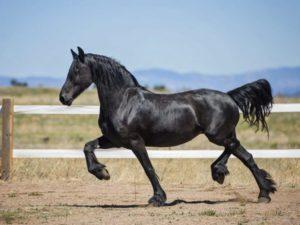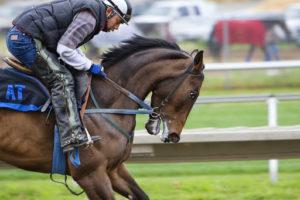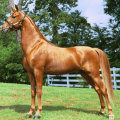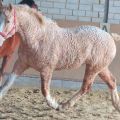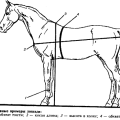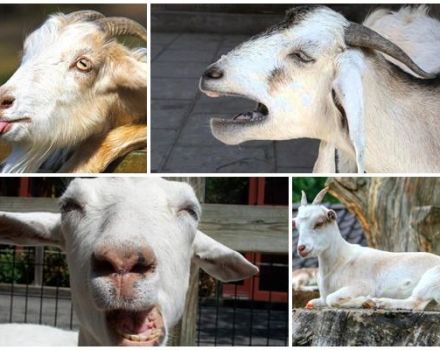Names of heavy horse breeds, their description and characteristics, where they are used
Heavy horses are not distinguished by special grace and swiftness, they do not demonstrate speed records. People bred these breeds to carry heavy loads, to facilitate work. Horses with a powerful physique have a calm disposition, stubborn and hardworking. Draft trucks are horse breeds created for everyday work in the field, in construction. They pulled smart carriages of monarchs and carts of peasants.
Features of heavy draft breeds
Power, impressive size and strength are the main characteristics of heavy draft horses. Riding horses are distinguished by exquisite beauty, harmony, fast running, and the ability to overcome obstacles. Such horses are not suitable for everyday hard work. Nervous horses with a restive temperament are not able to pull loaded carts, to perform routine work.
In the days of the knights, horses were required that could carry riders in heavy armor, with strength and endurance. Man began to cultivate large horses with powerful backs and limbs. In European countries, and then in Russia, heavy trucks appeared - horses that did not differ in speed characteristics, but by their nature they were suitable for everyday work.
The most important features of heavy draft breeds:
- Softness of the stroke. Impressive size and weight do not allow animals to make sudden movements, raise their legs high, which makes their gait calm. Heavy haulers pull the carts evenly, riders feel comfortable, do not get tired while riding.
- Impressive size, powerful body. Draft trucks are strong, powerful animals with excellent health, the ability to overcome the hardships of working life.
- Calm and peaceful character. Phlegmatic by nature, heavy trucks walk amicably harnessed together, get along with family members and other animals.
- Multifunctional use. Horses are used in the transportation of goods, field work. If desired, heavy trucks can be saddled and used as a riding horse. In many regions, the productive qualities of animals are traditionally used. Kumis and horse meat are useful and have a pleasant taste. On the basis of horse meat, gourmet products and sausages are made. The composition and value of mare's milk is close to that of a woman's.

Heavy haulers were raised in many stud farms in Russia, sales were 300-400 thousand per year. Almost 100 thousand heads were exported.
Characteristics and general exterior
During the active use of heavy trucks in the economy, almost 4 dozen breeds were bred, differing in external data, zootechnical characteristics. There were stud farms for breeding heavy trucks in many countries of Europe and America. With a significant difference in breeds, horses have a number of common features in the exterior:
- The head is massive, wide.
- The neck is short, inactive, and muscular. Due to the short neck, the horse is stable, keeps balance with considerable effort.
- Short nape, which often makes it difficult to control when riding.
- The croup of heavy draft trucks is more developed in width to ensure the stability of the hind legs. This is required to transport heavy loads.
- The chest is short-boned and of considerable width, which facilitates the work of the forelegs.
- The back is broad, of medium length and well-muscled. The back regulates the distribution of loads over the body, determines the strength indicators of the animal.
Draft carriers are easily distinguished from riding horses by their large figure, thickened limbs, and powerful chest. Depending on the preferences of the breeders, some breeds have more developed speed qualities, others impress with impressive sizes, and still others are famous for their fertility.
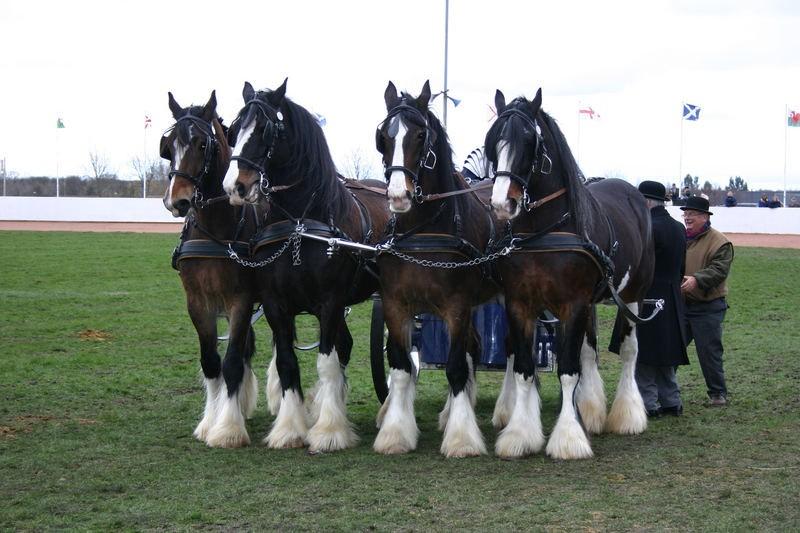
Heavy horses were not bred for fast riding, their gait is a step, although some breeds move easily and quickly. The height of heavy trucks is 160-200 centimeters, weight is 800-1000 kilograms.
Record animal performance
Representatives of heavy draft horse breeds became famous for many records, which were recorded by admiring owners and the public. Several impressive record numbers:
- The highest growth was recorded in the Sampson gelding of the Shire breed - 219 centimeters. Sampson's weight is 1524 kilograms. The horse was born in 1848, when the book of records was not yet kept. These figures are considered record-breaking, they have not yet been surpassed.
- The Guinness Book of Records recorded another representative of the Shire breed - the gelding Goliath with a height of 193 centimeters.
- Percheron Morocco (weight 1285 kilograms) and Brabancon Brooklyn Supreme - 195 centimeters had an impressive height of 215 centimeters.
- Heavyweights became famous not only for their size, but also for their draft power. A photo of 1893 has survived, in which a pair of Shire horses pulling a cart with a forest weighing 42 tons. The strongmen drove the loaded sleigh through the snow at a distance of 500 meters.
- The draft capacity of heavy trucks was measured at horse shows. Gelding Vulcan at Wembley created a thrust of 29 tons, which was recorded by a dynamometer. A pair of harnessed shires showed a result of 51 tons.
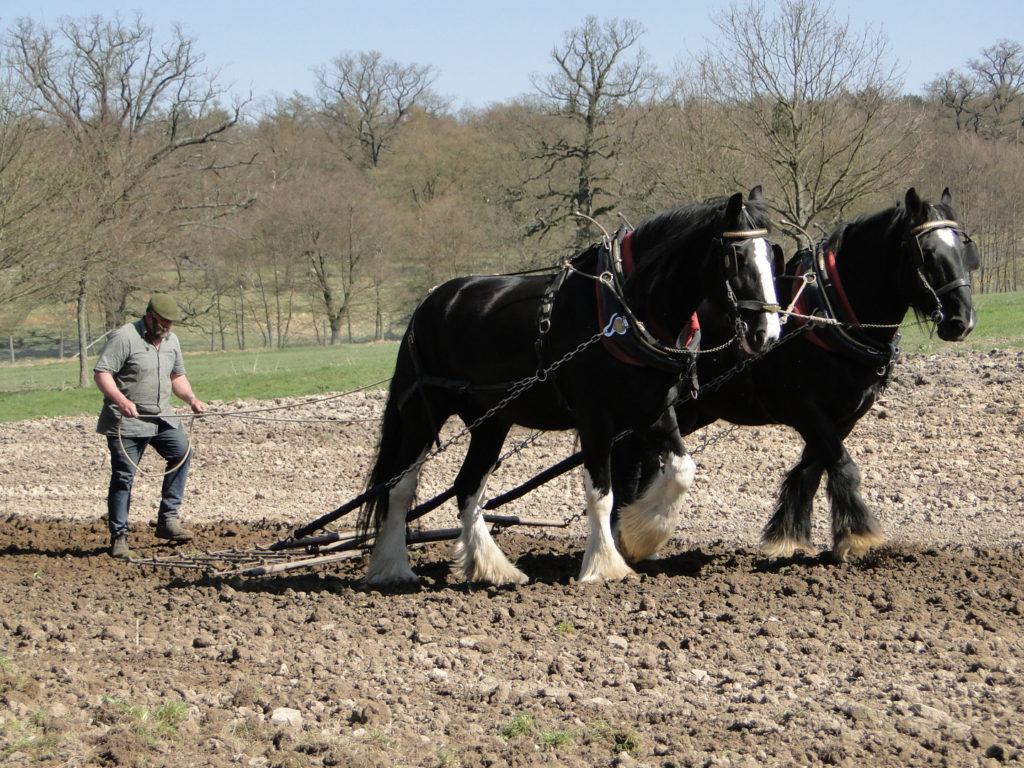
The decline in interest in heavy trucks is noted due to the development of technology. Records were recorded in the 19th and early 20th centuries, when the possession of powerful horses brought benefits and made work easier. Farmers were proud of their thoroughbred, strong horses, horse breeders were looking for fame in order to sell young animals from farms at a higher price.
Reference: mares of many heavy draft breeds during lactation give 5-6 thousand liters of valuable kumis, which has valuable properties.
Where are horses used?
The horses created for the heavy cavalry were appreciated by the farmers. Draft trucks were used for draft work, where great strength and endurance were required. The balanced character of powerful horses made them indispensable when performing routine, everyday operations in construction and agriculture.
At the end of the 19th century, a special permit was issued in European countries for the slaughter of horses and the use of horse meat for food. This was previously prohibited and punishable by law.The ban was lifted due to the decline in the role of horses in all sectors of the economy and the transition to mechanized labor.
Now, heavy trucks are used in tourism, sports, for walking and entertainment. The peaceful, benevolent nature of strong horses allows even beginners and children to feel confident with the animal, not to be afraid to fall and suffer from a hot temper. Heavy trucks are indispensable in horseback riding, horses transport riders and cargo along trails and off-road, wade rivers.
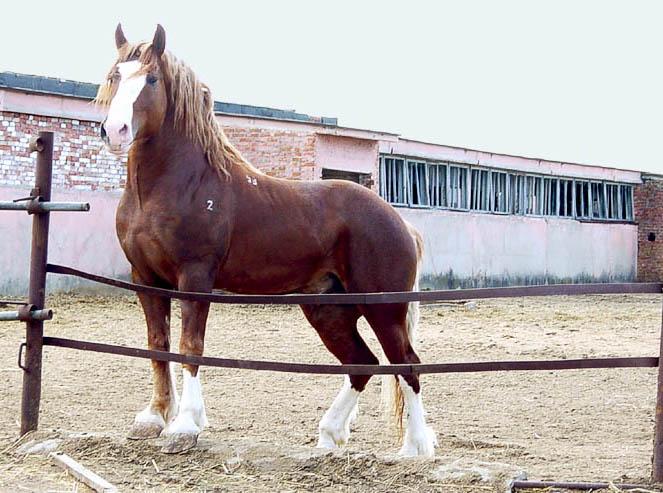
Calm disposition allows you to use heavy trucks at shows, festive events, in the circus. Mounted police select peaceful animals to patrol the streets and quickly move through cities loaded with cars. The selection of heavy trucks is moving towards the creation of breeds that are more frisky, less powerful, but retain the peaceful disposition inherent in large animals and the ability to get along with people.
Heavy truck breeds and their description
The leaders of the heavy draft breeds are Brabancons, Percherons and Shire. The power and exquisite exterior of these horses have earned the respect of horse breeders in different countries. Representatives of these species served as material for breeding large horses in Russia.
Suffolk
The favorites of English farmers are Suffolk heavy trucks. Unpretentious, quickly maturing horses are registered in the studbook of England in 1760.
Height - 165 centimeters, strong, massive body with pronounced muscles. The front legs are spread more apart than the hind legs. Suits are red and chestnut, legs are smooth, without hair. Suffolks are intelligent animals, they were used in various types of work that require ingenuity.

Irish
The Irish National Draft Truck is widespread throughout the UK. The unpretentiousness of the horses allowed even the poor to own them. Horses of the Irish breed are smart, quick-witted, do any job. Height - 150-160 centimeters. Strong, harmonious body. The suits are bay, red, gray. Used as riding and harness horses.
Note: Irish heavy trucks are known for their agility, light stride, which allows them to be used in shows, sports and tourism.
Boulogne breed
The ancestors of the Bois de Boulogne have been known since ancient times. The breed was registered in the 17th century, named after the main breeding region - Boulogne (France). Height - 160-175 centimeters, massive body, weight - 600-1000 kilograms. The horses of Boulogne are fed, according to standards, grain, so the body is strong, dry, muscles are dense. At a year and a half, maturity comes - the horses are early maturing. The character is flexible, non-conflicting.

Soviet
The breed was bred in the 1920s, officially recognized in 1952. The predominant colors are red and bay, combinations with a roan are allowed. Height - 155-160 centimeters, weight - up to a ton. The body is harmoniously shaped with a slight arch of the back. The croup is bifurcated, slightly droopy.
Soviet heavy trucks are unpretentious in food, mares are famous for their high milk production (up to 6 thousand liters per lactation season). Horses were used on farms to improve the non-breed livestock, and the first generation grew into an excellent workhorse. Stallion Force at the competition carried a load weighing 23 tons for several tens of meters.
Russian heavy truck
Short and muscular Russian heavy trucks are unpretentious, tolerate cold well, and are able to pull loads in excess of their weight on the road. The breed was bred from the Ardens, Percherons by a complex crossing. Horses do not grow more than one and a half meters, but are famous for their strength, are in demand in Russia and neighboring countries. The Russian heavy truck is active, energetic, good-natured. Work on improving the breed continues.

Vladimirskaya
Heavy trucks of the Vladimir breed are larger than other Russian species. Height - 165-175 centimeters, weight - 800-1200 kilograms. The colors are bay, karak, brown, red. White spots on the face and legs are welcome. Huge hard workers are unpretentious in content, used in the army. The residents of Vladimir obey the rein, are used under the saddle, even a child can control a massive horse.
Australian
The breed of Australian heavy trucks was formed at the end of the 20th century; they have been breeding for almost 100 years. Working horses in Australia were descendants of horses brought in different years, outbred. By standards, the weight of Australian heavy trucks is 600-900 kilograms, the suits are monochromatic. Horses inherited the qualities of different breeds. Horses are hardworking, calm disposition, benevolent. A plowing competition is held to assess the quality of Australian heavy trucks.
Bityug
A widespread breed of heavy trucks of Russian selection in the past. Horses were bred in the 18th century in the Voronezh province from local and European breeds. The growth of Bityugs reached 178 centimeters. By the end of the 19th century, horses became less and less, the breed disappeared, displaced by imported horses.
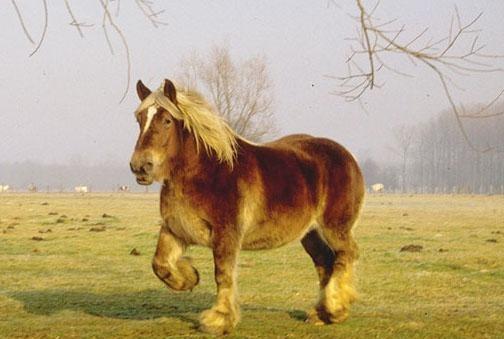
Reference: people call bityugs any huge horses with remarkable strength.
Shire
Records for size, weight and pulling power are held by Shire heavy trucks. Giant horses have been lovingly bred in Britain for centuries, and the herdbook was compiled in 1878. By standards, black, gray bay colors are allowed. Height - 163-178 centimeters, weight of stallions - 850-1100 kilograms. Shire heavy trucks were used in field work, when towing ships through canals, for transporting goods.
During the years of mass breeding, the number of shires reached a million heads. With the development of technology, the need for giant horses disappeared, animals began to be destroyed. At the end of the 20th century, due to public interest, work began to restore the livestock with slightly changed breed characteristics.
Percheron
The difference between the Percheron and other heavy breeds is the combination of strength and the ability to walk in harness at a moderate trot. The homeland of horses is the Perche region in France, where local large horses were crossed with Arab riding species to improve the breed.
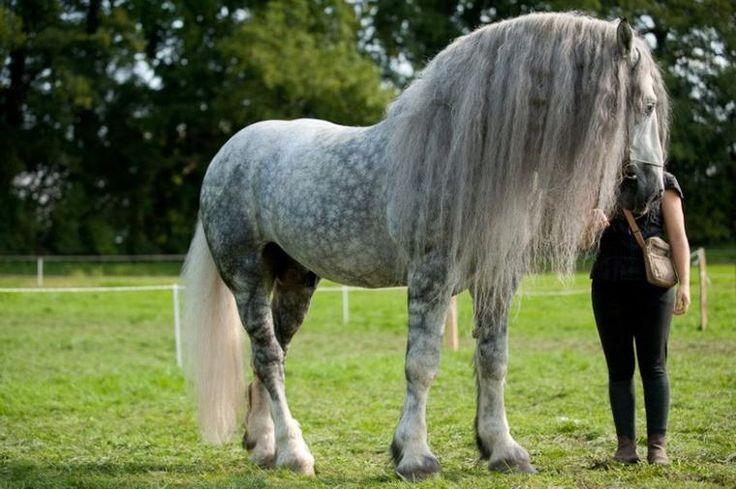
The result is powerful horses with a proportional body, a soft ride, capable of running quickly and carrying loads. The Percherons were used in the postal service and for omnibuses. The growth of the Percherons is 155-185 centimeters (varies in different countries), the color is gray, gray in apples, black.
Belgian (Brabancon)
In the 19th century, Belgian horse breeders bred the Brabancon, a heavy draft breed, crossing the Ardennes and local Flemish horses. The result is a horse with short, lean, muscular legs and a powerful body. The predominant color is red and bay. Height - 168-173 centimeters. Rigorous selection and harsh upbringing helped to create a breed of heavy trucks, capable of working to a ripe old age, undemanding to feed and keeping conditions. In Belgium, Brabancon meat is considered a delicacy. The breed continues to develop, the livestock is not decreasing. Horses are used in shows, agriculture, hiking and walking.
Reference: Brabancons are widely used to improve the quality of the breed and the number of simple horses. The very first foals grow into an excellent workhorse.
South German heavy-duty
A heavy draft horse bred in Germany is distinguished by its short stature (up to 156 centimeters) and a strong body. The noble head position, short neck with a light mane give the horses a special charm.
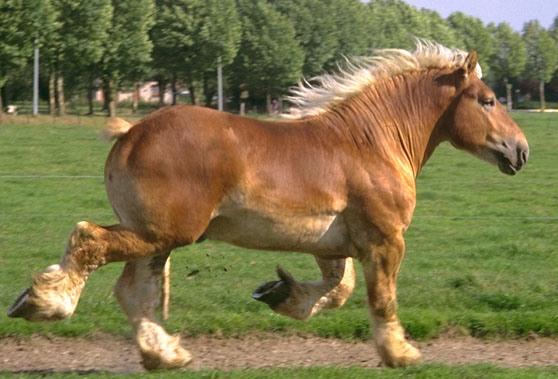
South German horses are distinguished from other heavy-harness horses by their light mobile body and fast pace. The heavy draft carrier walks quickly under the saddle, obeys the rider well, has an easy soft trot.
Cleydesdal
The first Clydesdals were not high; in the process of selection, the heavy trucks almost caught up with the height of the shires (by standards, the height of the Clydesdals is 163-183 centimeters). Scottish draft horses are early maturing, which adds value to the breed.
Horses have a phlegmatic character, which makes them unsuitable for sports.Because of the white stockings on their feet, the Clydesdale are welcome participants in parades and shows. Bay and karak suits prevail. Cleydesdale is used to improve rocks.
Gypsy tinkers
The Gypsy draft horse (tinker) is bred in Ireland. Another name is Irish Cob. A nomadic people arrived in Britain in the 15th century, brought in skewbald horses. Spotted horses were of no value to the British, the gypsies got culled specimens of various English breeds.

A small (1.36-1.6 meters) gypsy horse with a rough head and dense body gradually began to arouse interest among horse breeders. The draft carrier walks in a team, is hardy, mares feed foals of other breeds. Tinkers were registered as a separate breed at the end of the 20th century.
An easygoing character, friendliness, calm strength and unpretentiousness are the main advantages of heavy trucks. Due to the loss of economic importance, the number of powerful horses has decreased in most countries. People no longer need the help of horses in most jobs. Peace-loving animals are now used in non-traditional areas for heavy trucks - sports, tourism, shows, are used for the rehabilitation of children, walks and entertainment. Horse lovers hope that the magnificent animals who have stopped doing the hard work will continue to be human's best friends and companions.
